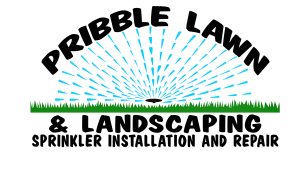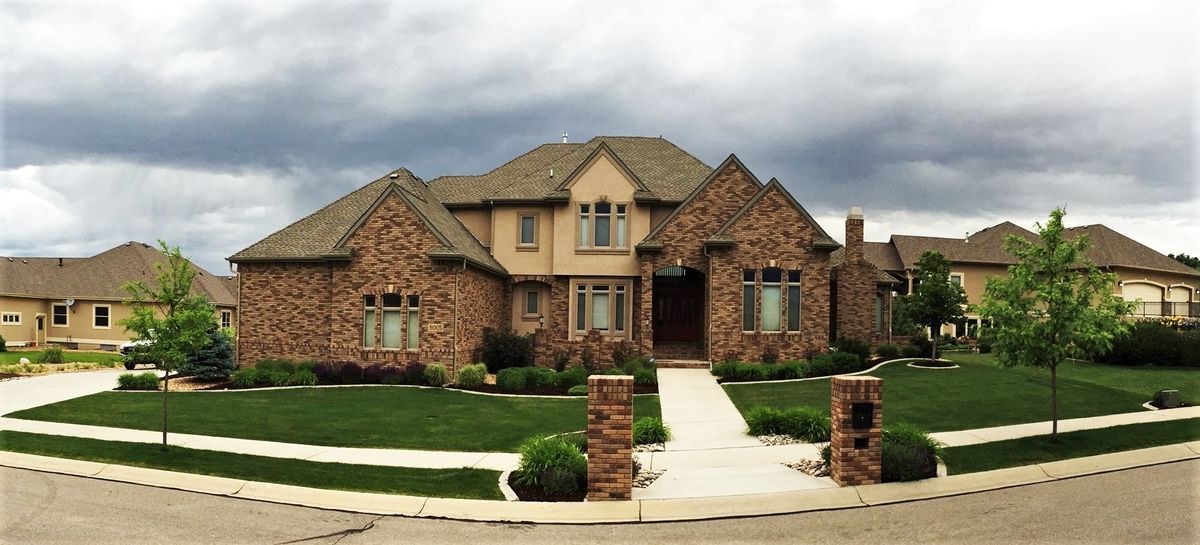Here at Pribble Lawn and Landscaping, we’re glad that September is starting. It means the start of the fall season, a break from the heat, and a chance to get caught up on some landscaping projects! Here in Greeley, we’ve been treated to a particularly hot and dry summer, so we’re hoping that we have a long, cool fall before winter settles in. But before we start reaching for our favorite sweaters, we’ll be picking up our favorite work gloves to help you complete your fall landscaping checklists. Let’s take a look at.
Start by Aerating the Lawn
While we haven’t gotten much in the way of rainfall this summer, we’re hoping that changes this fall. Fall is the ideal time to get your lawn aerated. Aeration is the process of perforating the soil. These holes allow air, water, and other nutrients to get into the root systems of your grass, helping them to grow stronger and more robust. Aerating your lawn also helps to prevent your soil from getting compacted. If your soil is packed together, from overuse, or just time, it prevents helpful nutrients from nourishing the roots.
Aerating in fall ensures that you won’t have rainwater or snowmelt pooling up in your yard, which can lead to other issues. By aerating your lawn in fall, you’re preparing it for winter and ensuring it comes back lush and verdant in the spring.
Keep your Lawn Well Fed
After aerating your lawn, you should give it the nutrients it needs to make it throw our long winters. The easiest way to do this, of course, is to use a quality fertilizer in the right quantity. If you haven’t used fertilizer in the past, you’re in luck. We’ve written not one, but two posts on fertilizing already. If you haven’t had the chance to read these over, here are a few key takeaways.
First, we’d suggest putting your fertilizer down in October or November. The soil is still relatively warm, and these added nutrients help your grassroots to continue to grow even after the blades have stopped. We recommend you base how much you use on the size of your yard and how much nitrogen is in the fertilizer. You’ll want to apply more fertilizer to areas that get more sunlight, and less to areas that stay in shade.
Put Down Some Mulch
There are a lot of benefits that come from putting down fresh mulch in the fall. When you put down mulch around your flower beds, trees, and other plants, you’re protecting the soil from erosion, as well as making it more difficult for weeds to sprout up in spring.
Mulch also acts as a natural blanket for your landscaping during the winter. A layer of two to three inches of mulch around your perennials and cool-weather annuals keeps them healthy and strong throughout winter.
Don’t Forget to Rake
This one is kind of hard to forget since you’ll notice if you don’t. Raking is much more than just to keep up the appearances of your lawn. It’s also important in keeping your lawn healthy throughout the winter. If you let your leaves sit on top of your lawn all season and into winter, it will essentially suffocate your lawn, and lead to mold and other diseases in your grass come springtime.
Rather than bagging up your leaves and throwing them away, you can make them into a great mulch and fertilizer for your raised garden beds. You can simply keep them in a compost bin, and add them to your yard as needed.
Get to Planting
There are some plants that actually prefer to be planted in the fall. Bulbs, shrubs, and some annuals need the cool, moist soil of fall in order to thrive. The cooler air temperatures and soil temperatures allow these plants to focus their energy and channel their nutrients to their root networks, helping them to establish themselves in the soil quickly. The additional moisture from the extra rain and snow we get in late fall also helps these root systems.
Since they had a chance to get established in fall, these plants will weather the winter season and come back healthy and strong in spring.
Call Pribble Lawn
Does this sound like a lot of work? Don’t worry, we’re here to help! For more than 20 years, Pribble Lawn and Landscaping has been taking care of yards in Greeley and across Northern Colorado. From aeration to irrigation repair, we do it all! Give us a call today and ask about our complete complement of yard services.

